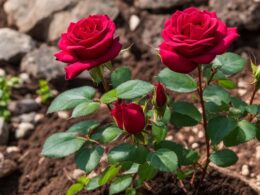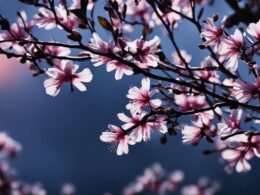In 1998, the Russian government declared chamomile to be the country’s national flower. Chamomile, also known as matricaria chamomilla, is a beautiful and culturally significant flower that thrives throughout much of Russia. This article will explore the history, symbolism, and cultural significance of chamomile as Russia’s national flower, highlighting its role in traditional medicine, art, and folklore.
Chamomile blooms from June to August and can be found in various landscapes such as cliffs, grasslands, and fields. It is not only a symbol of natural beauty but also carries deep cultural meaning in Russia. Associated with healing, rest, and tranquility, chamomile is often used in traditional medications and as a relaxing tea. Its medicinal properties make it a sought-after ingredient in folk medicine, treating ailments ranging from mental discomfort to stomach ulcers.
History and Symbolism of the National Flower
The declaration of chamomile as Russia’s national flower in 1998 holds historical and cultural significance. Chamomile has a rich history as a medicinal plant, dating back to ancient Greek and Roman times. It has been believed to possess healing properties for centuries.
The symbolism of chamomile revolves around its association with healing and tranquility. In Russian folklore, chamomile is regarded as a magical herb with restorative powers. It is considered a cure-all plant that can alleviate various ailments, including mental discomfort, anxiety, muscle strain, nausea, and cramps.
Chamomile’s symbolic value extends beyond its healing properties. It is deeply ingrained in Russian culture as a representation of well-being and serenity. The familiar aroma and ability to produce relaxing tea have made chamomile an emblem of rest and comfort in Russian society.
Chamomile’s significance goes beyond its cultural symbolism. The plant is widely used in traditional Russian medicine for its healing properties. It is considered a medicinal plant species and is utilized in various remedies and treatments. Its versatility and effectiveness have earned it a respected place in Russian traditional medicine.
Overall, chamomile’s history and symbolism as Russia’s national flower highlight its medicinal benefits, cultural significance, and its role in promoting well-being and tranquility in Russian society.
Cultural Significance of the National Flower
The national flower of Russia, chamomile, holds significant cultural value in the country. It is not only an emblem of natural beauty but also represents traditional Russian values of healing, tranquility, and rest.
Chamomile is frequently depicted in various forms of Russian art, including famous paintings, figurines, murals, pottery, 
In Russian folklore, chamomile is revered for its almost magical healing properties and is often associated with remedies for various ailments. It is used in traditional medicine to treat conditions ranging from mental discomfort to stomach ulcers.
The cultural significance of chamomile in Russian society is evident through its presence in art, folklore, and traditional medicine. Its portrayal in various art forms showcases its importance and recognition as a symbol of Russian culture and heritage.
Conclusion
The national flower of Russia, chamomile, is a powerful symbol of natural beauty and cultural significance. Its association with healing, tranquility, and rest has made it a cherished emblem in Russian society. Chamomile’s presence in various forms of art and media, including paintings and stamps, reflects its deep-rooted cultural significance in Russia. Additionally, chamomile plays a vital role in traditional Russian medicine, thanks to its believed medicinal properties.
By adopting chamomile as their national flower, Russia showcases its rich cultural heritage and values of well-being and harmony. The recognition of chamomile as a powerful symbol reinforces the importance of health and serenity in Russian culture. Its depiction in various artistic mediums and its use in traditional medicine further reaffirm chamomile’s status as a cultural icon in Russia.
As we immerse ourselves in the beauty and cultural significance of chamomile, let us appreciate the importance of preserving and celebrating the traditions that define a nation. Chamomile’s enduring presence as Russia’s national flower serves as a reminder of the historical, artistic, and medicinal aspects of this remarkable plant. Let chamomile continue to inspire us with its timeless beauty and the values it represents.
Can Snow and Summer Jasmine also be found in Russia as the national flower?
In Russia, it can be challenging to cultivate year-round blooms like Snow and Summer Jasmine due to the country’s harsh climate. However, with proper care and attention, it is possible to find these flowers thriving in certain regions as the national flower.









